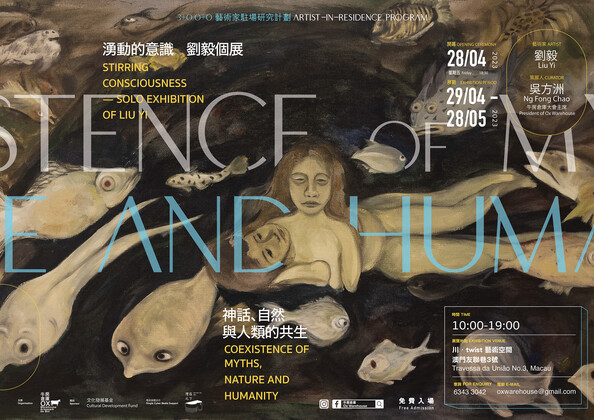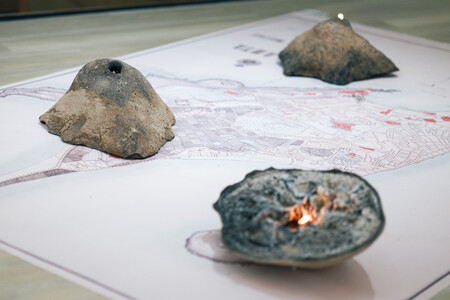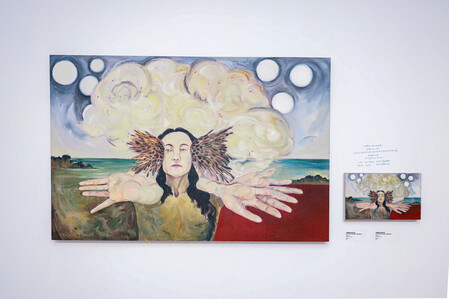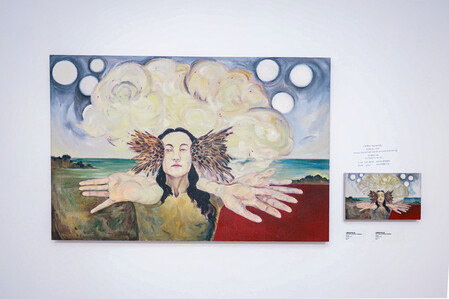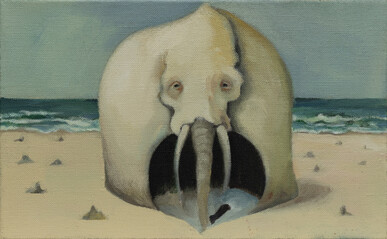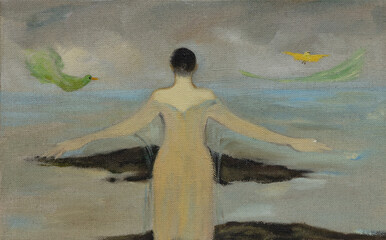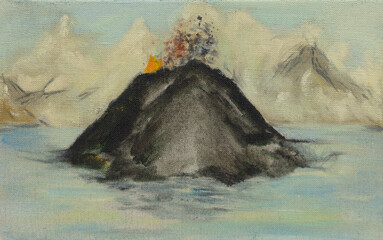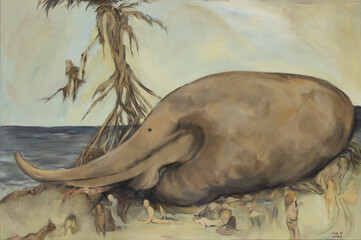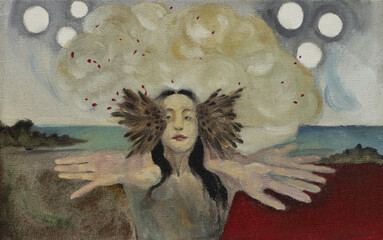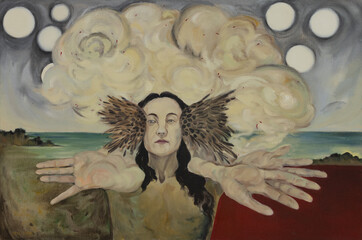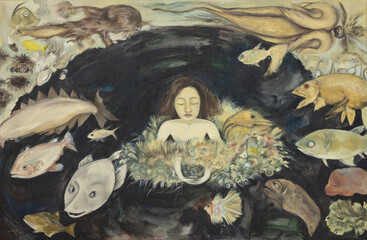Solo Exhibition OX Warehouse, Macao
As a type of human activity for development, land reclamation alters the shape of coastlines, expands the land area and creates more land resources but it also has a profound impact on the existing ecological structure and environment as well as the landscape and culture of a city. In this context, Liu Yi uses the theme of land reclamation in Macao to lead the audience into a world of mythology and reality. A brand new perspective is utilized to examine the relationship between humans and nature, while the ocean is a vehicle of human recognition and its appearance alters in tandem with the changes in human recognition. This exhibition does not only explore land reclamation, but it is also a multi-dimensional dialogue about ecology, philosophy and anthropology.This provides us an opportunity to reconnect with nature and humanity. With a creative and inspirational perspective, alongside multiple art forms like video installations and painting, this exhibition showcases the multi-faceted nature of land reclamation and explores the impact of land reclamation on cities and human life.
As a form of civilization, maritime civilization first emerged in the myths of ancestors. A very close relationship exists between the creation of myths and the living environment of people creating the myths. Through the imagination of people, myths are the natural and social forms that are unconsciously manipulated in an artistic approach. The works of Liu Yi are based on 15 myths and legends concerning various characters from coral girls to the ocean guardian.These tales closely link humans to the ocean, and demonstrate the ecological changes brought by land reclamation and its impact on the spiritual world of humans. Through the comparison of the techniques of expression between ancient mythology and modern technology, these illustrate the evolution of human recognition and attitudes towards land reclamation. From the reverence for nature and the search for harmony and coexistence in the ancient mythology, to the desires of controlling nature due to the development of modern technology, Liu’ s works examine and explore the relationship between humans and nature, and underscore the subtle relationship between them.
The humanistic meaning of the ocean refers to the patterns of human behaviors, the human ways of living and production, and human interactions arising from nature and the ocean. As an objective target, the ocean plays different roles in tandem with the degrees of human perceptions towards the ocean. The works in this exhibition also focus on the impact of land reclamation on cities and human life, and reflect on various aspects like urban history, culture and identity.Meanwhile, the artist adopts a new perspective to examine his relationship with nature and rethinks ways to strive for a balance between development and conservation, thus exploring issues like identity and emotional belonging brought by land reclamation. Through the multidisciplinary analysis of the phenomenon of land reclamation, the exhibition reveals the intricate andcomplex relationship between humans and nature. This relationship is not only reflected in the changes of the ecosystem, but it is also involved in the psychological, cultural and historical aspects of human beings.
Because of our existing knowledge system, traditional education and cultural communications, we have little knowledge of maritime culture. Thus, it can be said that maritime culture is in a state of aphasia and marginality. This exhibition is an examination of the phenomenon of land reclamation, and a profound reflection on the relationship between humans and nature. In this era of rapid development, we need to show reverence for nature all the time and strive for a balance between development and conservation. After visiting this exhibition, it is hoped that the audience can think deeply about how we can live in harmony with nature amid the process of continuous development, and recognize the fragility and preciousness of the natural environment as well as our responsibilities on Earth.
More Pictures:

